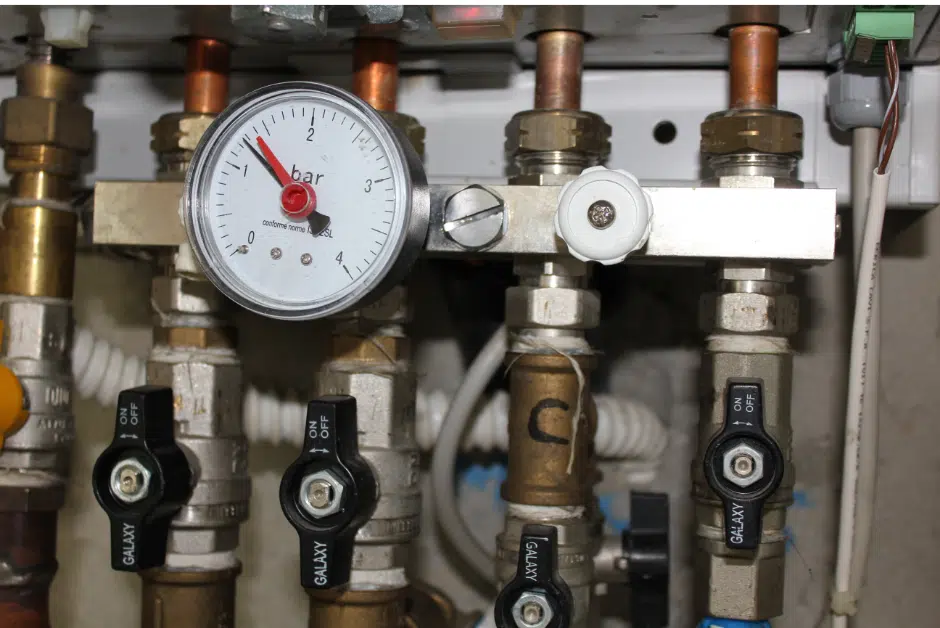During the cold season, your furnace becomes one of the most important devices in your house. As you know, dealing with freezing temperatures would be impossible without a source of indoor heat.
Like any other appliance in your house, a furnace may run into problems that might hinder its proper operations. And, while it’s undoubtedly designed to last longer than many other appliances, several problems may still occur during its useful lifetime.
So, if your furnace stops working, can you quickly troubleshoot the problem? Well, even if you can’t, this article will help you out. We will discuss the most common furnace repairs.
Most Prevalent Furnace Problems with Solutions
Sometimes, even a minor issue with your furnace might disrupt its proper function. Having an idea of what is causing a malfunction can go a long way in helping to find a solution faster.
Here are some of the most frequent furnace problems that you might encounter.
1. Furnace Produces Zero Heat
The work of the furnace is to generate heat that warms up your indoor space during the cold season. If it fails to do this, then this is a major problem. In fact, most of the questions we encounter about the furnace are mainly about heating problems.
But why might your furnace fail to produce heat?
There are several reasons why this problem can occur, the most common one being a faulty thermostat. For instance, if your thermostat doesn’t turn on, your furnace won’t produce any heat.
Setting your thermostat a few degrees up or down can help you determine if the thermostat is the problem. If no changes are visible, you can check whether the circuit breaker has tripped, as this might also be the cause of the problem.
In case you still can’t identify the cause of the failure, it’s always recommended that you seek the assistance of a qualified HVAC technician.
2. Short Cycling
The furnace is designed to turn off and on after a few minutes as it completes each heating cycle. This is meant to enable it to maintain the desired temperatures (as set on the thermostat) without overheating the house.
However, these cycles (turning on and off) may become too frequent, meaning that the furnace isn’t completing the heating cycle. Usually, a furnace will undergo 2-3 cycles an hour, each lasting around 15 minutes. If you notice your furnace turning on and off within 1-10 minutes, this might be short cycling.
There are several reasons why the furnace might not complete the desired heating cycles. These include the following:
- Dirty furnace filter (2-5 minute short cycles): The solution is to replace the filter.
- A faulty flame sensor: Replace the sensor with a new one. Call a professional for this.
- Closed heat vents (3-10 minute short cycles): At least 75% of the vents should be open.
- An oversized furnace (3-7 minute short cycles): Get the right-sized furnace for your house.
- Blocked exhaust vent (1-5 minute short cycles): Clear any obstruction from the exhaust vent.
Regular maintenance of your furnace can prevent most of these issues from occurring.
3. Noisy Furnace
While some furnaces produce negligible sounds when operating, some units do produce some more concerning noises. This noise might become louder and more noticeable if the furnace has a problem.
Some of the noise types that might indicate heater problems include:
- Squealing sound: This type of noise is usually due to a worn-out belt that needs replacing.
- Grinding sound: These sounds are often an indication of worn-out bearings. If you don’t have the know-how to replace them, call an HVAC technician.
- Rattling or knocking sounds: The sounds might be because of some loose parts in your heater, such as bolts or open panels.
When you notice any of these unusual sounds coming from your furnace, calling an HVAC technician is the best idea. A technician can easily diagnose the problem and help you handle any furnace repairs.
4. Furnace Can’t Turn On Automatically
Generally, a properly functioning furnace should automatically turn on once you set the temperature on your thermostat. If it doesn’t, then there is an issue.
Just like the above-mentioned heater problems, a furnace that doesn’t turn on automatically might be a result of several underlying issues. And, depending on the severity of the problem, it can be a DIY repair issue or one that requires a professional.
For instance, your circuit breaker might have tripped, causing the furnace to go off. If that’s the case, all you need is to turn the circuit breaker switch back on, and the furnace is good to go.
Also, if the settings on your thermostat are high, the furnace won’t start or cool your house. Therefore, all you need here is to adjust the thermostat to a lower setting.
Other issues that might cause your furnace not to turn on include:
- Faulty pilot light or ignition
- Fuel
- Clogged air filter, etc.
Some of these issues may require you to call a qualified technician to fix them.
5. Blower Not Turning Off
The blower is designed to help push the heat generated by the heater to the desired locations within the house. However, it doesn’t work continually. It is supposed to turn off after a while, then come back on again.
If the process doesn’t happen this way and the blower keeps blowing, it is a problem.
To solve this issue, first, check whether the fan settings require it to run continuously. If so, change the settings by choosing the ‘On’ option instead of the ‘Auto’ option on the thermostat. If this doesn’t work, you can try to lower the temperature settings on the thermostat to see if that fixes the issue.
Other issues that may be causing the blower to keep blowing include a faulty fan limit control switch or a worn-out thermostat. To fix any of these issues, you need to seek the help of an expert.

